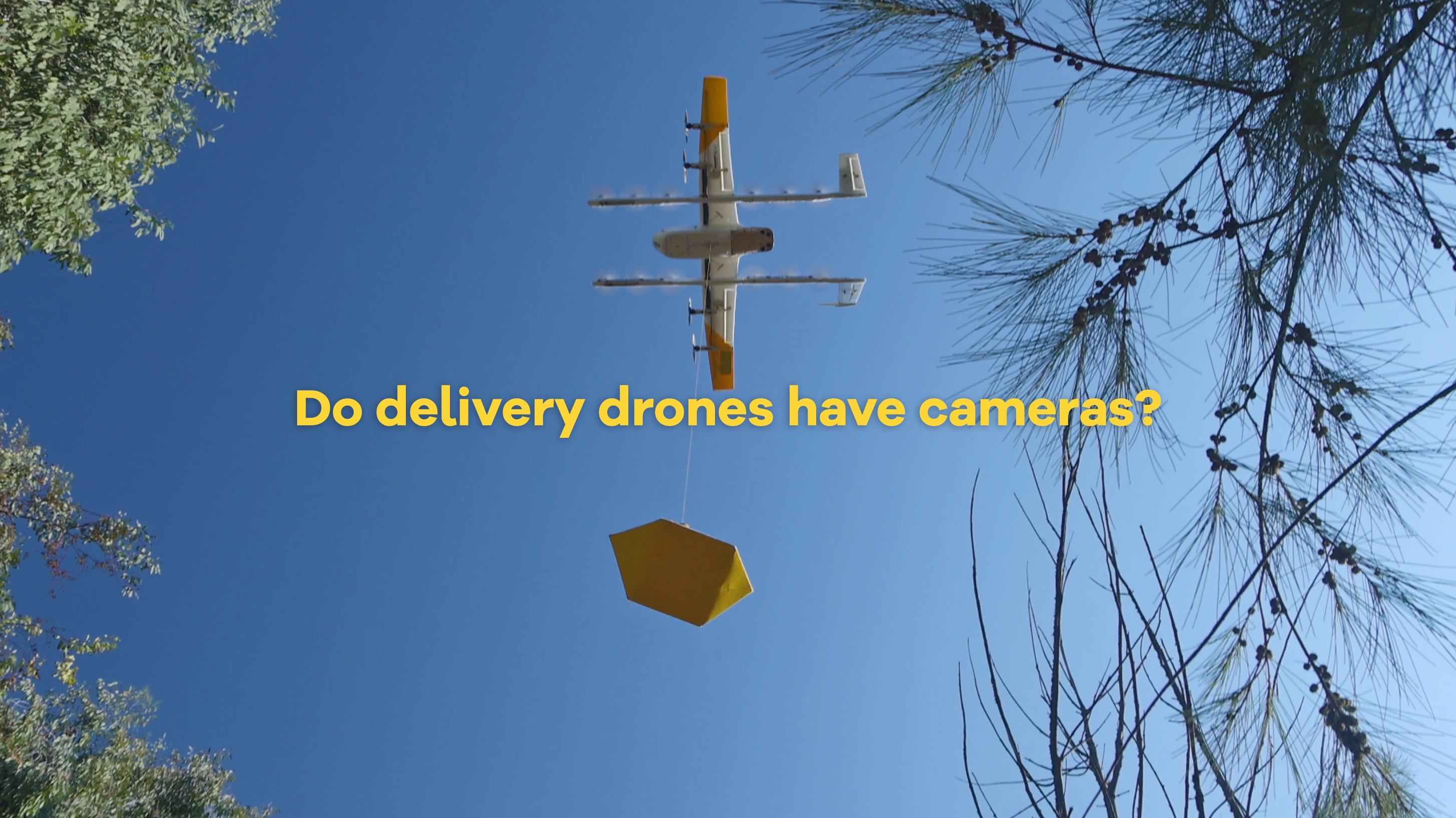November 16, 2022
Do delivery drones have cameras?

There’s a saying: use the right tool for the job. It means don’t use a tool that is too big or small for the task at hand – use one that is sized correctly. In the delivery space, the wrong tool is often used. For example, multi thousand pound vehicles deliver small packages on-demand all the time. At Wing, we’re designing a better tool. To deliver lots of small, lightweight packages – we designed a drone that is small and lightweight. Rightsizing the tool for the task is a key design philosophy for Wing. It drives everything from understanding the problem we’re trying to solve to the next iterations of drones we plan to build to how our drones see and perceive the world around them.
What a drone sees, most people think about the drones that they most often see – off the shelf drones that are used for filming or photographing things from above. These are great for certain use cases – like real estate, filming, or photography. Our drones, however, have a different mission and different requirements. The system we’ve built is highly automated, with pilots that oversee multiple drones at once, and is weight constrained. There is no need for high definition video or imagery. Instead, we designed our drone’s perception capabilities to fit the specific needs of the problem we’re trying to solve: ensuring packages are delivered reliably.
Not all living things are programmed to see the world in the same way. Dogs see fewer colors than humans. Snakes can see in the dark based on the heat signatures of their prey. But with living things, you can’t program them to see things differently. With machines you can, and this allows you to program their perception capabilities based on the function they are meant to serve. With Wing’s drones, we’ve designed a perception system that is the right tool for the job.
Subscribe to Wing’s blog to get the latest news and tech developments. ↓


